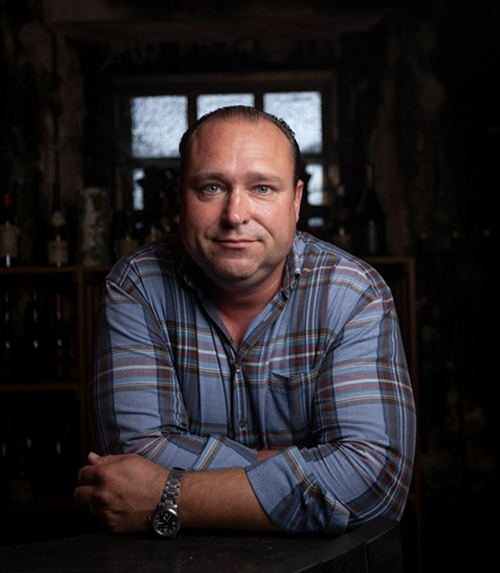
THE LORD OF THE OCKFENER BOCKSTEIN!
Winegrower Nik Weis is, like hardly anyone else, synonymous with top-quality wines from the Saar and Mosel regions. His winery, St. Urbans-Hof, is located in Leiwen on the Mittelmosel, but almost half of his vineyards are on the Saar. Here, in the prime vineyards of Ockfener Bockstein, Schodener Saarfeilser and Wiltinger Schlangengraben, wonderfully full-bodied and aromatic Rieslings are produced, which undoubtedly rank among the best in Germany.
Here you can get the wines from Nik Weis at the usual winemaker prices .
THE LORD OF THE OCKFENER BOCKSTEIN!
Winegrower Nik Weis is, like hardly anyone else, synonymous with top-quality wines from the Saar and Mosel regions. His winery, St. Urbans-Hof, is located in Leiwen on the Mittelmosel, but almost half of his vineyards are on the Saar. Here, in the prime vineyards of Ockfener Bockstein, Schodener Saarfeilser and Wiltinger Schlangengraben, wonderfully full-bodied and aromatic Rieslings are produced, which undoubtedly rank among the best in Germany.
Here you can get the wines from Nik Weis at the usual winemaker prices .
last seen
"With nature, not against it!"
A closer look at the label of Nik Weis wines reveals a Latin inscription on the family crest: "Con Natura – Non Invicem" – with nature, not against it. All vineyard practices are based on this conviction. A diverse range of grape varieties is cultivated. This means that Nik Weis no longer removes a single vine, but rather replaces individual damaged vines, thus maintaining a diverse age mix in his vineyards. Old single-pole systems with old vines and high planting density are preserved and traditionally cultivated by hand. The classic "Mosel hearts," where the two arched vines are tied together in a heart shape on the single pole, are, in Nik Weis's view, perhaps the best cultivation method for our region and a traditional commitment. The vines are fertilized exclusively organically and managed in a nature-friendly way. However, organic certification is not sought, as the use of fungicides is desired in years with high disease pressure. Instead, the winery carries the FAIR'N GREEN label. This organization not only ensures sustainable, environmentally friendly management but also incorporates other factors, such as fair treatment of its employees, in a holistic approach. Furthermore, Nik Weis winery implements other quality-enhancing measures, such as leaf removal from the grape zone and grape sorting, to reduce yields and ensure optimal aroma development in the grapes. The highly aromatic grapes are selectively hand-picked as late in the year as possible, often not before mid-October, and carried in traditional "Hotten" (wooden containers) on their backs from the vineyard to the vats. From there, they are taken to the winery and, depending on the wine, macerated briefly or for several hours to better release the aromas contained in the skins. After the grapes have been gently pressed, the must is allowed to settle overnight so that the sediment settles to the bottom. The clear grape juice is then drawn off into stainless steel tanks and fermented there at a controlled temperature with native yeasts. Some of the wines mature on the fine yeast in stainless steel tanks after fermentation, until shortly before bottling. However, the top wines are allowed to mature further in the classic 1,000l oak barrels, the so-called Mosel-Fuderfässer, before they are bottled.
"Black and white labels for better orientation"
The wines of Nik Weis – St. Urbans-Hof are known above all for their intense aroma with fully ripe fruit, floral notes, their silky texture and great balance. Six years ago, the labels were redesigned to make it easier for you, our valued customers, to find your way around the wines and to provide clear orientation. Dry wines – according to the house philosophy, these are wines that are legally dry and semi-dry – bear a white label. Wines with fine residual sugar and sweet wines, on the other hand, bear a black label.
 Delivery time 2-3 working days
Delivery time 2-3 working days Saar wines at winemaker prices
Saar wines at winemaker prices Largest Saar wine range on the web
Largest Saar wine range on the web Advice: 0176 638 92254
Advice: 0176 638 92254








